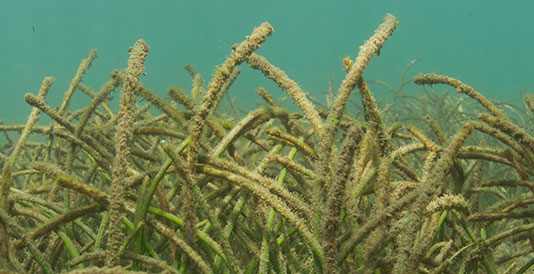 August 7, 2017 (Source: FIU) - Scientists are zeroing in on the seagrass meadows that could help slow down climate change. Seagrass meadows are great absorbers of carbon dioxide from the air. But the algae, animals, corals and plants that live among them release large amounts of carbon dioxide, according to newly released research. The scientists are now identifying seagrass locations with fewer emitters to target for conservation. Scientists at Florida International University examined seagrass meadows in Florida Bay, some of the largest on Earth, where waters are warm and plant and animal abundance is high. They compared these ecosystems to those in southeastern Brazil where meadows are smaller, waters are cooler, and plant and animal abundance is lower. They found that although Florida Bay’s seagrasses act as carbon sinks, the organisms living among them offset the benefits of seagrass carbon storage by releasing carbon dioxide.
August 7, 2017 (Source: FIU) - Scientists are zeroing in on the seagrass meadows that could help slow down climate change. Seagrass meadows are great absorbers of carbon dioxide from the air. But the algae, animals, corals and plants that live among them release large amounts of carbon dioxide, according to newly released research. The scientists are now identifying seagrass locations with fewer emitters to target for conservation. Scientists at Florida International University examined seagrass meadows in Florida Bay, some of the largest on Earth, where waters are warm and plant and animal abundance is high. They compared these ecosystems to those in southeastern Brazil where meadows are smaller, waters are cooler, and plant and animal abundance is lower. They found that although Florida Bay’s seagrasses act as carbon sinks, the organisms living among them offset the benefits of seagrass carbon storage by releasing carbon dioxide.
“In seagrass meadows, these two processes happen simultaneously and have opposite effects on carbon sequestration,” said Jason Howard, researcher in FIU’s Marine Education Research Initiative and lead author of the study. “If we want to mitigate the most carbon dioxide emissions, we need to understand these competing processes and choose conservation sites accordingly.”











